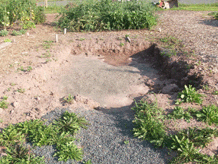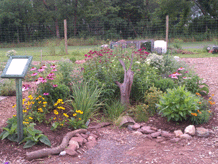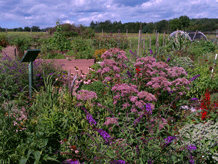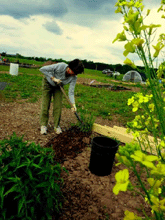Rain Gardens are designed to capture rainfall and slowly let it percolate back into the soil to recharge groundwater supplies. This prevents stormwater runoff from our roofs and pavements from overloading our natural streams and causing erosion. Rain Gardens also filter out pollutants, and when planted with native species, they increase the biological diversity of the garden by offering a unique habitat for wetland plants, toads, butterflies, birds, and other animals.
The CLDS demonstration rain garden receives stormwater runoff from the nearby shed via a gutter and downspout system. It also receives some surface runoff from the adjacent upland area. Measuring approximately 10' x 20', the garden's subbase was excavated to about four feet, and then replaced with gravel, sand, and compost before being dressed with topsoil. About 20 different species now add to the biological diversity of the garden. Plants which tolerate frequent flooding and moist soil occupy the ponding area or lowest position, wheras plants that tolerate both wet and dry conditions occupy the middle and berm areas. 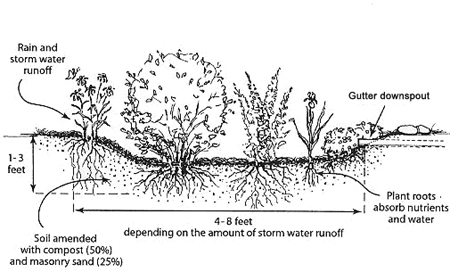
Photos of the garden under construction (left) and one year later (right).

